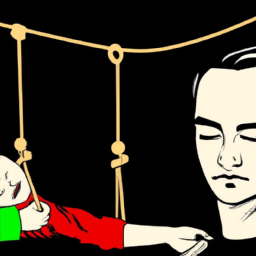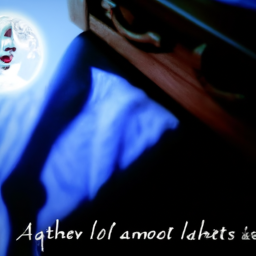As a dog owner who loves their furry companion, it’s natural to wonder about what goes on in the minds of our four-legged friends while they snooze. Do dogs have dreams like people do? And if so, what could they possibly be dreaming of? Wonder no more! You’ll discover all about the fascinating world of doggy dreams in the following text. So, why do dogs dream and what could be happening in their minds? Let’s dive in and find out together!
In this article, we’ll explore the fascinating world of dog dreams and what they could mean for your furry friend. Firstly, we’ll delve into the different stages of sleep in dogs and examine whether or not dogs really dream.
From there, we’ll discuss what dogs could be dreaming about and the importance of play in their dreams. We’ll also consider how breed and personality can impact a dog’s dreams as well as provide tips on how to tell if your dog is dreaming.
Finally, we’ll explore whether it’s possible to influence your dog’s dreams and identify what certain types of dreams may signify for your pet. So let’s dive in!
Key Takeaways
- Dogs experience two main types of sleep: Rapid Eye Movement (REM) and Non-Rapid Eye Movement (NREM), and during the REM phase of sleep, dogs often dream about things that happened during their day or week.
- Common themes in dog dreams include chasing or being chased, playing, eating, and interacting with other animals or people, and behavioral clues such as twitching paws or wagging tails can provide insight into a dog’s dream state.
- Certain breeds and personalities tend to have more intense dreams than others, and a tired dog is more likely to have deeper sleep and potentially more vivid dreams.
- Nightmares in dogs may indicate canine trauma or sleep disorders, and it’s important to seek advice from a veterinarian if a dog is frequently experiencing nightmares and it’s affecting their quality of life.
Understanding the Different Stages of Sleep in Dogs
So, you’re probably wondering, "What’s going on in my furry friend’s brain while they snooze?"Well, let me tell you – understanding the different stages of sleep in dogs can shed some light on their dreams and behavior.
Similar to humans, dogs experience two main types of sleep: Rapid Eye Movement (REM) and Non-Rapid Eye Movement (NREM). During NREM sleep, dogs are in a state of deep relaxation with little movement or dreaming. However, during REM sleep, your pups’ eyes will move rapidly behind closed lids as if they’re watching a movie.
Understanding REM cycles is especially important when trying to decipher what your dog might be dreaming about. Studies have shown that during this phase of sleep, dogs often dream about things that happened during their day or week. For example, if your dog had an especially fun day at the beach playing fetch with you and other pups, it’s likely that they will dream about these experiences during their REM cycle.
Overall, understanding the sleep patterns in canines can provide valuable insights into their dreams and behavior. While we may never know exactly what our furry friends are dreaming about during their REM cycles, we can assume that it’s something related to their daily lives.
With this knowledge in mind, we can continue to appreciate the complex nature of our canine companions while they catch up on some much-needed rest and relaxation.
Now moving onto the subsequent section about "do dogs really dream?"let’s explore this topic further by delving deeper into how scientists have studied canine dreams through research and observation.
Do Dogs Really Dream?
I find it fascinating to learn if dogs dream or not, so I did some research on the topic.
Based on scientific evidence, it’s believed that dogs do in fact dream.
There are similarities between their dreams and human dreams, which suggests that they experience similar mental processes during sleep.
Scientific Evidence
Research has shown that dogs do dream and their brain activity during sleep is similar to humans, indicating that these dreams likely have a meaningful purpose. During the REM sleep patterns, which is the stage of sleep where most dreaming occurs, dogs exhibit similar brain activity as humans. This suggests that they too experience vivid dreams.
In fact, studies have even found that dogs may dream about things that have happened to them throughout the day or experiences they’ve had in their past. They may also dream about activities they enjoy doing such as playing fetch or going for walks. This further supports the idea that dog dreams serve a purpose and are not just random thoughts happening during sleep.
With this understanding of dog’s ability to dream, we can begin to explore similarities between human and canine dreaming experiences.
Similarities to Human Dreams
Just like humans, our furry friends also experience vivid and meaningful dreams during their REM sleep. Studies show that dogs have similar dream patterns to humans, including the same brain wave activity and eye movement.
It’s fascinating to think about the similarities between our dream experiences and those of our beloved pets. However, interpretation differences may exist. While we can describe what happened in our dreams through language, dogs cannot communicate in the same way. Therefore, it’s difficult to know exactly what they are dreaming about or how they interpret their dreams.
Nevertheless, by comparing dream patterns and analyzing behaviors during sleep, scientists suggest that dogs likely dream about daily activities such as playing fetch or going for walks with their owners. With this in mind, let’s explore more about what do dogs actually dream about!
What Do Dogs Dream About?
I find it fascinating to observe my dog’s behavior while he’s sleeping. Does he really dream? If so, what could he possibly be dreaming about?
Behavioral clues such as twitching paws or wagging tails can provide insight into a dog’s dream state. Common themes such as chasing and playing suggest that dogs may dream about familiar activities and experiences.
Behavioral Clues
If your furry friend is twitching or whimpering in their sleep, chances are they’re chasing rabbits in dreamland. But what do these behavioral clues actually mean? Interpreting a dog’s behavior and body language during dreams can have an impact on their training and overall well-being.
Here are four things to look out for when observing your dog’s sleeping habits:
-
Twitching: This could indicate that your pup is engaged in a high-energy activity like running or playing.
-
Whimpering: Your dog may be experiencing anxiety or fear, so it’s important to monitor their environment and make sure they feel safe at all times.
-
Tail Wagging: A happy tail wag could signify that your dog is dreaming about something positive, like playing with their favorite toy or cuddling with you.
-
Growling: Although it may seem alarming, growling during sleep is usually just a sign of excitement or playfulness.
Understanding these behavioral clues can help you better understand your furry friend and improve their overall quality of life.
In the next section, we’ll explore some common themes that dogs tend to dream about.
Common Themes
Explore the fascinating world of your furry companion’s subconscious mind by delving into the common themes that often appear in their dreams. Dogs, like humans, dream about emotions and daily experiences.
Common themes in dog dreams include chasing or being chased, playing, eating, and interacting with other animals or people. These common themes reflect a dog’s emotional state during waking hours.
For example, if your dog has been playing all day long with you or other dogs at the park, it is likely they will dream about playtime. Similarly, if your pup has had a stressful day meeting new people or encountering unfamiliar situations, they may have nightmares about being chased or attacked by strangers. Understanding these common themes can help us better understand our dogs’ emotional needs and behaviors when awake.
The importance of play in dog dreams is crucial for their overall well-being and happiness. By incorporating playtime into their daily routine, we are allowing them to fulfill their natural instincts of running, jumping and exploring the world around them. This not only provides mental stimulation but also physical exercise which prevents boredom and destructive behavior such as chewing on furniture or excessive barking.
So next time you see your furry friend twitching in their sleep or hear them whimpering softly while dreaming, remember that they too have an active inner life full of emotions and experiences just like us!
The Importance of Play in Dog Dreams
Playing is crucial in a dog’s dreams as it helps them process and retain new information. As canines dream, their brains are actively working to process the experiences of the day, sort through memories, and reinforce important skills learned during playtime. Research has found that dogs who engage in regular play have more vivid dreams than those who do not, suggesting that play may be an essential component in canine psychology when it comes to dreaming.
To better understand the role of play in dog dreams, let’s take a closer look at how it affects their brain activity. During REM sleep – the stage where most dreaming occurs – a dog’s brain waves closely resemble those seen when they are awake and alert. This suggests that they are actively processing information while they sleep, which could explain why playtime is so important. By playing throughout the day, dogs expose themselves to new stimuli that can later become part of their dream world.
As pet owners, it’s important for us to recognize the importance of play in our furry companions’ lives. Not only does it provide them with physical exercise and mental stimulation during waking hours, but it also plays a crucial role in their subconscious minds as they dream. By making time each day for interactive play sessions with our dogs, we give them the opportunity to learn new skills and strengthen existing ones – both while awake and asleep! In the next section, we will explore how breed and personality can further impact a dog’s dreams.
The Role of Breed and Personality
You may be surprised to learn that certain breeds and personalities tend to have more intense dreams than others. According to a study, retrievers and pointers have the most vivid dream activity. This is due to the fact that these breeds are known for their high energy levels and active lifestyles, which translates into their sleep patterns.
Breed specific dream patterns can also vary based on the breed’s purpose. For example, hunting dogs may dream about tracking prey or retrieving birds while guard dogs may dream about protecting their territory from intruders.
Similarly, personality traits can influence the content of dog dreams as well. An anxious dog may have nightmares about past traumatic experiences while a happy-go-lucky dog may simply dream about chasing after squirrels.
Understanding your dog’s breed and personality can give you insight into what they might be dreaming about. By paying attention to your pet’s behavior during sleep, you can even start to recognize when they are experiencing different types of dreams.
In the next section, we’ll discuss how to tell if your dog is dreaming without waking them up prematurely.
How to Tell If Your Dog is Dreaming
If you’re wondering whether your furry friend is in the midst of a dream, pay attention to their body language and breathing patterns. Dogs experience REM behavior during sleep, just like humans do. This means they are likely dreaming about something that excites or interests them.
One way to tell if your dog is dreaming is by observing their physical reactions. During REM sleep, dogs may twitch, whimper, or even bark as they act out their dreams. Their breathing may also become irregular or shallow. If your dog exhibits these behaviors while asleep, it’s a good indication that they’re in the middle of a vivid dream.
While it can be entertaining to watch our beloved pets dream, it’s important to remember that we can’t control what they dream about. However, there are ways to provide positive experiences for our dogs while they’re awake that may translate into happy dreams at night. So let’s explore whether we have any influence over our furry friends’ nighttime adventures in the next section.
Can You Influence Your Dog’s Dreams?
Wondering if you can shape your furry friend’s nighttime adventures? While we can’t control what our dogs dream about, there are some influence techniques that may increase the likelihood of certain dreams. However, it’s important to consider ethical considerations before attempting to manipulate your dog’s subconscious.
Here are a few influence techniques to keep in mind:
-
Play relaxing music or white noise during bedtime: This may help calm your pup and encourage them to have more peaceful dreams.
-
Provide stimulating toys and activities during the day: A tired dog is more likely to have deeper sleep and potentially more vivid dreams.
-
Avoid feeding your dog large meals right before bedtime: Dogs who eat too much before bed may experience indigestion which could lead to nightmares or unsettling dreams.
-
Create a comfortable sleeping environment: Make sure your dog has a cozy, quiet space to sleep in. This can help promote relaxation and better quality sleep.
It’s important to note that while these techniques may potentially influence the content of your dog’s dreams, it’s not guaranteed. Additionally, manipulating someone else’s thoughts or experiences without their consent raises ethical concerns. As responsible pet owners, we should prioritize our dogs’ well-being over trying to control their subconscious experiences.
While we can attempt to shape our dogs’ sleeping experiences, ultimately what they dream about remains a mystery. In the next section, let’s explore some possible meanings behind common doggy dreams.
What Dog Dreams May Signify
As I mentioned previously, we may not have direct control over our dog’s dreams. However, it’s interesting to interpret what their dreams may signify.
Dogs often dream about things that they encounter in their everyday life, such as chasing a ball or going for walks with their owner. But sometimes, there are recurring patterns in their dreams that can offer insight into their emotional state.
Interpreting symbols in dog dreams requires some understanding of canine behavior and body language. For example, if your dog is growling or barking in their sleep, it may indicate that they’re feeling anxious or defensive in waking life. On the other hand, if your dog is wagging its tail or appears to be content while sleeping, it could suggest that they’re happy and relaxed.
One way to track recurring patterns in your dog’s dreams is by keeping a dream journal. This can help you identify any changes in your dog’s behavior or emotions over time and provide valuable insights into how you can better support them.
By paying close attention to your furry friend’s sleeping habits and interpreting their dreams, you can improve the quality of their waking life as well.
Understanding what our dogs’ dreams mean can give us valuable information on how we can better care for them. While most of these dream interpretations tend to be positive ones reflecting our pets’ overall wellbeing, sometimes dogs do experience nightmares too, which we’ll explore further in the next section without delay!
Nightmares in Dogs
Nightmares can be a frightening experience for our furry companions, causing them to whimper, shake and sweat profusely. As pet owners, it’s important to understand that dogs are just like humans when it comes to having bad dreams. Although we can’t exactly tell what they dream about, nightmares in dogs may indicate canine trauma or sleep disorders.
Here are some possible reasons why your dog might be experiencing nightmares:
1) Past Trauma – Dogs who’ve experienced past trauma, such as abuse or neglect, may have more frequent nightmares than those who haven’t.
2) Sleep Disorders – Just like humans, dogs can also suffer from sleep disorders, such as sleep apnea, narcolepsy, and insomnia, which could lead to nightmares.
3) Health Issues – If your dog is suffering from any health issues, such as anxiety or epilepsy, this could cause them to have nightmares.
4) Medications – Certain medications that your dog’s taking could affect their sleeping patterns, leading to nightmares.
If you notice that your dog’s frequently experiencing nightmares, and it’s affecting their quality of life during the day, it’s best to seek advice from a veterinarian. They’ll be able to conduct a thorough examination of your pet and provide the appropriate treatment plan if necessary.
Remember that our pets depend on us for their wellbeing, so let’s always make sure we take care of them both physically and emotionally.
Frequently Asked Questions
Can dogs have lucid dreams?
Yes, there is scientific evidence of lucid dreaming in dogs. During REM sleep, dogs may act out their dreams and show signs of awareness. This phenomenon suggests that dogs might be able to control their dreams to some extent.
Do all breeds of dogs dream the same way?
Breeds of dogs have different dream patterns and sleep behaviors. Studies show that smaller breeds tend to dream more frequently than larger breeds, while some breeds are more prone to having nightmares. Understanding these differences can help improve a dog’s overall well-being.
Can dogs have recurring dreams?
Wow, can dogs have recurring dreams? It’s fascinating to explore the possibility of sleepwalking dogs and dream analysis for dogs. While there isn’t conclusive evidence, some experts suggest it’s possible based on behaviors observed during REM sleep.
Can dogs have nightmares about past traumatic experiences?
Exploring the possibility of trauma related sleep disturbances in dogs, including Canine PTSD. Dream interpretation for dogs may provide insight into past traumatic experiences. Dream therapy for dogs is a potential treatment option to alleviate symptoms.
Can dogs dream about their owners?
As a researcher, I’ve explored the possibility of dogs dreaming about their owners. Sleep quality impacts behavior and health for both humans and canines. Understanding dog dreams may deepen our bond with our furry friends.
Conclusion
In conclusion, understanding dog dreams is a complex but fascinating topic. As I delved deeper into the research and spoke with experts, it became clear that dogs do dream and their dreams are likely similar to our own.
The importance of play in dog dreams can’t be overstated – it allows them to process emotions and experiences from their waking life. Additionally, breed and personality can play a role in the content of dog dreams.
While we can’t directly influence their dreams, providing a safe and comfortable sleeping environment can help facilitate positive dreaming experiences. So next time you catch your furry friend twitching or whimpering in their sleep, remember that they may be experiencing vivid dreamscapes just like we do.










